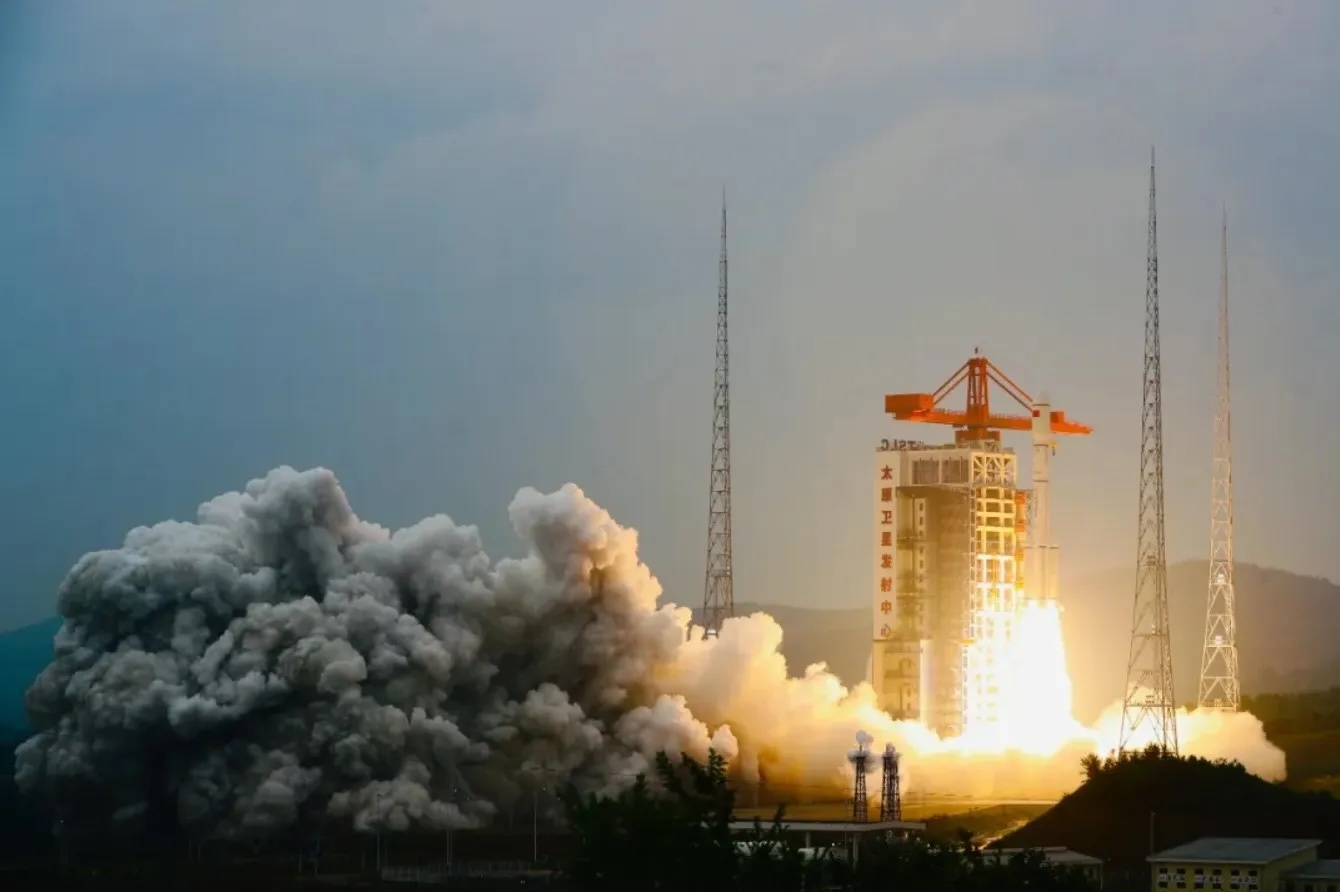14.07.2024

HELSINKI — The upper stage of China’s Long March 6A rocket appears to be creating numerous pieces of space debris, adding to the growing issue of orbital debris.
The latest Long March 6A launched July 4, lifting off from a specifically constructed launch pad at Taiyuan spaceport. The 50-meter-long, 530-metric-ton rocket features two kerosene-liquid oxygen stages and four solid propellant side boosters.
The rocket, developed by the state-owned Shanghai Academy of Spaceflight Technology (SAST) successfully delivered two Tianhui-5 (02) remote sensing satellites into roughly circular, 600-kilometer-altitude sun-synchronous orbits.
S2a systems, a Swiss company which develops and operates customized systems for optical space surveillance worldwide, detected a series of objects surrounding the Long March 6A upper stage.
The nature and cause of the debris is unclear. It could be related to passivation of the stage or broken insulation.
U.S. Space Force’s space domain awareness has not cataloged any debris associated with the upper stage, suggesting the objects are very small. S2a systems notes that such clouds of objects are not visible with launches of other rockets.
While small, the objects will, however, be traveling at around seven kilometers per second and pose a threat to spacecraft. SAST has been contacted for comment.
S2a systems also detected around 60 objects surrounding a Long March 6A upper stage launched in late March.
Space debris is an issue of growing significance, potentially threatening satellites, spacecraft and space stations. There are 40,500 space debris objects greater than 10 centimeters in orbit, and 1,100,000 objects from greater than 1 cm to 10 cm, according to latest figures from June this year related to space debris from ESA’s Space Debris Office estimate
There have been more than 640 break-ups, explosions, collisions, or anomalous events resulting in fragmentation, according to ESA statistics.
Agencies, companies and others are developing approaches to dealing with and mitigating orbital debris.
The apparent Long March 6A issue highlights how commercial entities are assisting space situational awareness. Amateur astronomers and radio enthusiasts are also helping to track major space events.
Upper stage issues hit space missions
A number of upper stage issues have impacted missions this week. The first Ariane 6 launch suffered an issue in which the launcher’s upper stage could not relight, affecting plans for the end of the mission.
A Chinese commercial Hyperbola-1 rocket lost its payloads after its fourth stage experienced an anomaly late July 10.
An upper stage engine of a Falcon 9 rocket malfunctioned July 11, causing the potential loss of a batch of Starlink satellites.
China has launched six Long March 6A rockets. The first launched in March 2022. The upper stage of the second flight, in November that year, broke up into a cloud of debris.
The launch vehicle is China’s first combining both new Chinese kerosene-liquid oxygen and solid propellant capabilities.
The 3.35-meter-diameter rocket bears little resemblance to the 2.25-meter-diameter standard Long March 6. Further Long March 6A launches are planned for the coming months.
China also debuted the Long March 6C in May this year. That rocket uses the 6A core stage without side boosters.
The country aims to launch about 100 times this year, according to CASC, the parent of SAST and China’s main space contractor. Around 30 of these are planned by commercial launch service providers.
Quelle: SN
